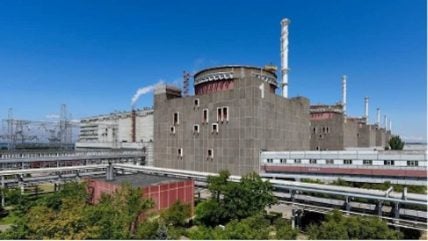
Zaporizhia NPP (ZNPP) Director Yuri Chernichuk told RIA Novosti that a small crack in a pipeline at the plant had been repaired. “This is nothing unusual. Any equipment tends to fail periodically. The micro-crack that was detected on the pipeline is something that happens during plant operation,” he noted. “The staff knows what to do and the measures have been completed. The defect has been corrected, and monitoring us underway. After the leak-tightness of the equipment is confirmed, it will be put into operation.”
ZNPP Communications Director Yevgenia Yashina said there was no risk. “A microcrack on the pipeline does not pose a threat to nuclear safety,” she added, noting that no violations of safety limits and conditions had been recorded. She said background radiation at the plant and the surrounding area remained at normal levels.
International Atomic Energy Agency (IAEA) Director General Rafael Mariano Grossi had said earlier, during an update on ZNPP that repairs were being conducted in one of its six reactors “after a small water leakage was detected from an impulse line – essentially a small pipe – connected to the unit’s primary circuit”.
The IAEA expert team stationed at the ZNPP visited unit 1 after being informed that one of the impulse lines, part of the reactor coolant pump support systems, was leaking and required repair. For this work, the pressure in the primary circuit had to be decreased to atmospheric level. The team was informed that welding work had been completed and that radiography checks of the welds were on-going.
Grossi said the Agency will continue to follow this issue closely, “although we don’t see any immediate issue for nuclear safety”. He added: “In general, we have identified regular equipment maintenance – which is vital to ensure sustainable nuclear safety and security – as a challenging area for the Zaporizhia NPP during the conflict.
Like ZNPP’s five other reactors, unit 1 had been in cold shutdown, generating no electricity for the grid, before that change in status to shutdown for maintenance. “It is expected that unit 1 will be put back to cold shutdown after the repair of the impulse line is completed and tested.”
The IAEA team also carried out other walkdowns as part of their continuous work to assess – and report on – nuclear safety and security at the ZNPP, “where the general situation remains precarious on the frontline of the conflict”.
The team visited the main control rooms of all six units to examine key plant parameters as well as the staffing situation. The IAEA staff have also visited some of the emergency diesel generators (EDG) of units 2 and 5 to verify the readiness of equipment and check the diesel fuel levels. “As virtually every week, the team has continued to hear explosions daily, although no damage to the plant was reported.”






